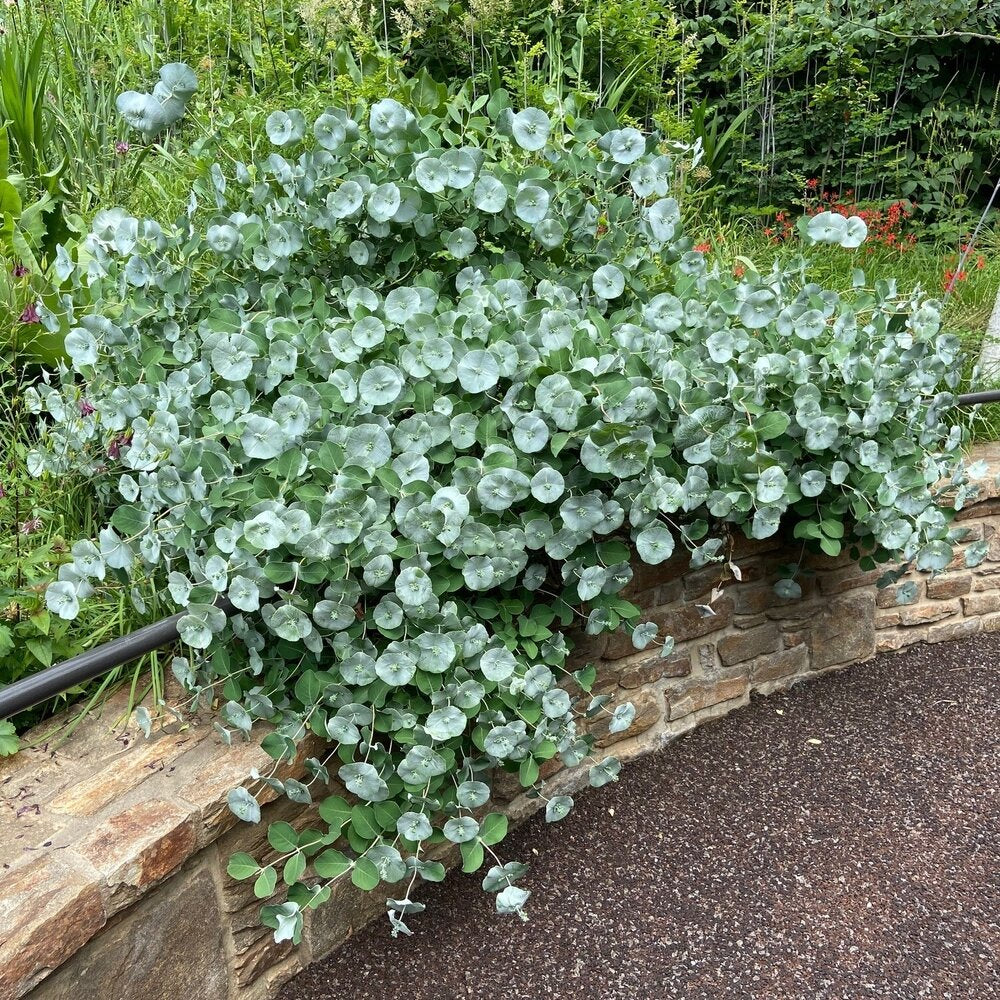Riverdene Garden Center
Kintzley's Ghost Honeysuckle
Kintzley's Ghost Honeysuckle
Couldn't load pickup availability
Lonicera reticulata ‘Kintzley’s Ghost’
Kintzley’s Ghost® Honeysuckle is a cold-hardy, ornamental vine known for its silvery-blue foliage, bright yellow flowers, and unique circular bracts that give it a ghostly, moonlit appearance. It is a non-invasive, low-maintenance, drought-tolerant vine that climbs trellises, fences, and arbors beautifully. This rare and striking honeysuckle is perfect for adding vertical interest to landscapes in Southwest Saskatchewan.
Planting & Location
- Hardiness Zone: 4-8 (cold-hardy, but benefits from sheltered locations in Zone 3)
-
Mature Size:
- Height: 8-12 feet tall (when given support to climb)
- Spread: 4-6 feet wide
- Growth Rate: Moderate to fast (1-2 feet per year)
- Sunlight Needs: Full sun to partial shade (best flowering and foliage color in 6+ hours of direct sun)
-
Soil Preference:
- Prefers well-drained, loamy soil.
- Tolerates clay, sandy, and slightly alkaline soils.
- Avoid standing water, as it dislikes soggy roots.
- Spacing: 4-6 feet apart when planting multiple vines.
Watering
- Young Plants (First Year): Water deeply 1-2 times per week to establish roots.
- Established Vines: Drought-tolerant but benefits from deep watering every 10-14 days in dry conditions.
- Avoid Overwatering: Prefers moderate soil moisture but does not tolerate overly wet conditions.
Fertilizing
- First Year: No fertilizer needed—focus on root establishment.
-
Mature Vines:
- Apply a balanced slow-release fertilizer (e.g., 10-10-10) in early spring to encourage strong growth and flowering.
- Organic alternative: Compost or well-rotted manure in spring.
Pruning & Maintenance
- Best Time to Prune: Late winter to early spring, before new growth starts.
-
How to Prune:
- Remove dead, damaged, or weak branches to promote healthy growth.
- Trim lightly after flowering to maintain shape and control size.
- Older plants can be rejuvenated by cutting back one-third of the oldest stems every 3-4 years.
Flowers, Foliage & Seasonal Interest
- Bloom Time: Late spring to early summer (May-June), with bracts persisting into fall
- Flower Color: Bright yellow tubular blooms attract hummingbirds and pollinators.
-
Bracts & Foliage:
- Spring & Summer: Silvery-blue leaves with large, round, ghostly silvery-green bracts
- Fall: Bracts and foliage take on a subtle golden tone before dropping
Pest & Disease Management
Resistant to: Drought, deer, urban pollution, and most pests
Common Pests:
-
Aphids – May cause curled leaves and sticky honeydew.
- Solution: Spray with insecticidal soap or introduce ladybugs.
-
Spider Mites – Can cause leaf discoloration in hot, dry conditions.
- Solution: Hose off with water or use insecticidal soap.
Common Diseases:
-
Powdery Mildew – White fungal coating on leaves in humid conditions.
- Solution: Improve airflow and apply fungicide if needed.
-
Leaf Spot (Fungal or Bacterial) – Brown spots on foliage.
- Solution: Avoid overhead watering and remove infected leaves.
Winter Protection
- Highly winter-hardy in Zone 4-8, but may need some protection in Zone 3.
- Mulching: Apply 2-4 inches of mulch around the base (not touching the stems) to insulate roots.
- Shelter from harsh winter winds in colder climates to prevent dieback.
Landscape Uses
Ideal for fences, trellises, pergolas, and arbors
Attractive silvery foliage and bracts provide season-long interest
Bright yellow flowers attract pollinators
Low-maintenance and non-invasive
Works well in both modern and cottage-style gardens
Additional Notes:
- Kintzley’s Ghost® Honeysuckle is one of the most unique honeysuckle varieties, offering stunning silvery bracts and bright yellow blooms.
- Lifespan: 20+ years with proper care.
- Non-invasive – Unlike Japanese honeysuckle, this vine won’t take over your landscape.
- Works well as a climbing vine or trained along fences and walls for dramatic effect.
Photo courtesy of Proven Winners
Share


